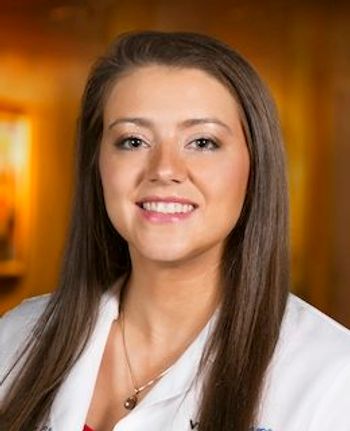
AOA 2025: Lifitegrast 5.0% shows positive effect on clinical signs and biomarkers in patients with dry eye disease
Lifitegrast 5.0% significantly improves clinical signs and biomarkers in dry eye disease, demonstrating effective results within 12 weeks of treatment.
A 12-week study enumerated the benefits of lifitegrast 5.0% (Xiidra, Bausch + Lomb) an FDA-approved anti-inflammatory drug for treating dry eye disease. First author Adam Alexander, OD, director of medical affairs at Bausch + Lomb, reported the specifics of the study findings at the 128th Annual 2025 American Optometric Association Congress in Minneapolis. He was joined by colleagues Paul Karpecki, OD, FAAO, from the Kentucky Eye Institute, Lexington, and Eric Donnenfeld, MD, from Ophthalmic Consultants of Long Island, New York.
The investigators evaluated the efficacy of the formulation in dry eye disease using the disease’s common biomarkers and clinical symptoms over 12 weeks.
Prospective case series
The study included adults with dry eye with an ocular surface disease index (OSDI) of 25 or higher, clinical findings of dry eye, and tear osmolarity of 312 mOsm/L in at least one eye. The patients instilled one drop of lifitegrast into each eye twice daily over the course of the study.
At each evaluation at baseline and 2, 6, and 12 weeks, the patients completed the OSDI questionnaire and underwent tear osmolarity assessment, matrix metalloproteinase-9 (MMP-9) testing, a slit-lamp evaluation, Schirmer testing, and measurement of the tear film breakup time, corneal staining, meibomian grading, and conjunctival lissamine green staining.
Fifty patients (mean age, 43 years; 78% women) were included in the study. The mean baseline OSDI was 52.2, indicating severe disease, and the mean tear osmolarity 317 mOsm/L. MMP-9 was detected in 36 eyes and the fellow eyes.
Alexander reported that treatment with lifitegrast 5.0% resulted in “a statistically significance (P < 0.001) improvement compared with the baseline value in the OSDI at week 12,” at which time the mean value was 31.2, considered a moderate score. The improvements were observed at each visit.
The tear film osmolarity also improved significantly for each eye and for both eyes combined as the result of treatment with lifitegrast. The mean value at 12 weeks was 293 mOsm/L; P < 0.001), considered in the normal range.
Other biomarkers evaluated also improved, according to Alexander. Schirmer testingresults increased from a mean of 11.66 mm at baseline to 17.35 mm at week 12 (P < 0.001). The tear breakup time improved from 8.1 seconds at baseline to 10.4 seconds at week 12 (P < 0.001). Fluorescein staining went from the baseline value of 0.27 to 0.07 at week 12 (P < 0.001).
Finally, lissamine green testing improved from the baseline 1.03 to 0.12 at week 12 (P < 0.001). Of these, the Schirmer test and the lissamine green test changed significantly by the second visit after treatment initiation. No change in MMP-9 was seen.
Regarding the slit-lamp evaluations, Alexander reported that most eyes had improvements or no change in the score in the lid/lid margin, conjunctiva, cornea, and anterior chamber. No scores exceeded 1 by the fourth visit.
For patients with baseline scores of 1 or 2, most had improvements by the fourth visit.
Regarding assessment of the meibomian glands, two patients had a worse score at the fourth visit compared with baseline because of plugging of the meibomian glands.
No adverse events occurred as a result of the treatment.
Alexander concluded, “The study showed that lifitegrast 5.0% effectively improved all measured clinical signs and biomarkers in patients with dry eye disease by the end of the 12-week study. Improvements were seen as early as 2 weeks after the treatment started, including the OSDI scare and the crucial measurement of tear osmolarity and for the hallmark sign of inflammatory dry eye, which is conjunctival lissamine green staining.”
Adam Alexander, OD, is an employee of Bausch + Lomb, and Paul Karpecki, OD, FAAO, and Eric Donnenfeld, MD, are both consultants for Bausch + Lomb.
Newsletter
Want more insights like this? Subscribe to Optometry Times and get clinical pearls and practice tips delivered straight to your inbox.


















































.png)


